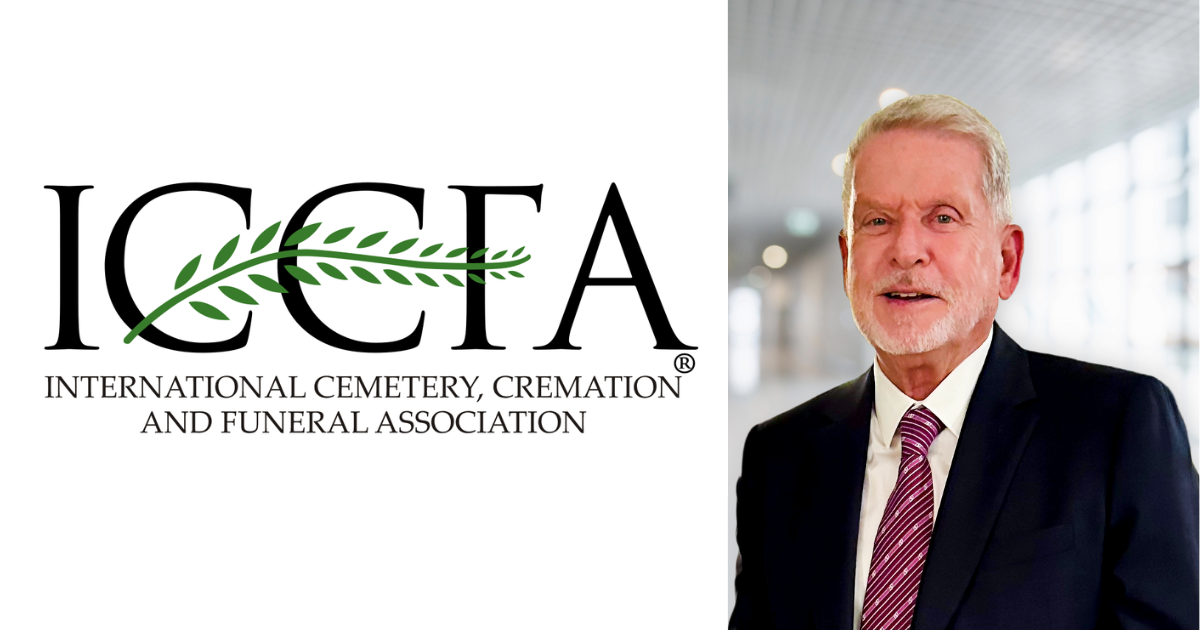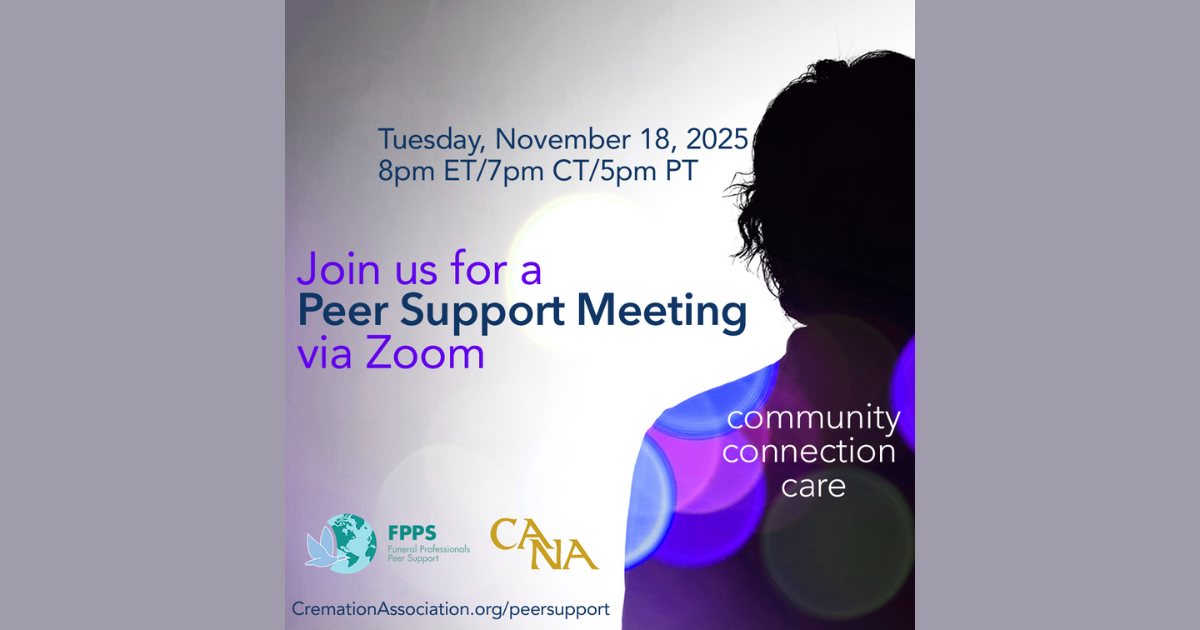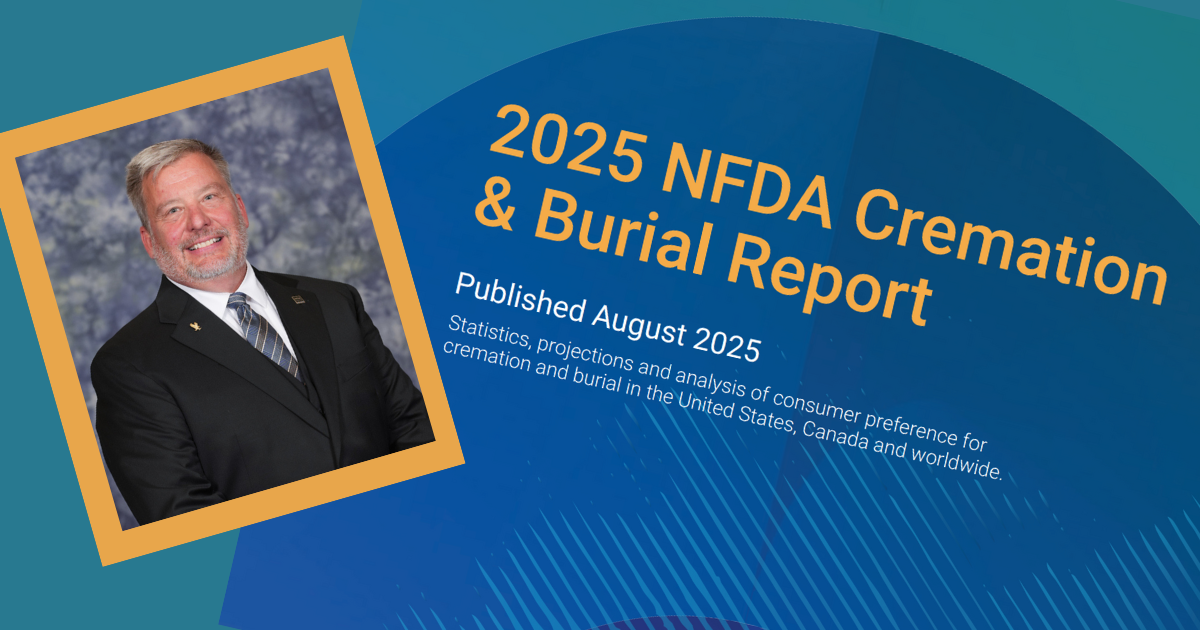Paint by Numbers
Article Originally publish in the Memorial Business Journal
Connecting Directors Funeral Director Survey Looks at Today’s Competitive Arena
Editor’s note: As part of our analysis this week of the Connecting Directors Funeral Directors Survey, we will also be drawing comparison to other recent surveys including the 2011 NFDA Business Issues Report and the 2012 NFDA Consumer Survey.
Zanesville, Ohio – This week, Connecting Directors released the results of its own funeral service survey capturing
respondents’ opinions on a wide range of topics. (This week, we will looks at revenues, collections and cremation). While the Connecting Directors survey gathers data from funeral service practitioners, it comes just two months after a consumer survey conducted by the National Funeral Directors Association, which gives us an opportunity to pair responses to similar questions from both sides of the business.
“We wanted to conduct a survey of the www.connectingdirectors.com community and the funeral profession as a whole,” said Ryan Thogmartin, founder and CEO of Connecting Directors.
This survey was sent out by numerous funeral profession associations through email and social media links. Thogmartin also enlisted Timothy J. O’Brien, of the Institute of Stress Management & Performance Improvement, Tallahassee, Florida, who he calls the survey developer and facilitator, to assist in developing and conducting the survey.
Of the survey’s 631 participants, 71.2 percent (454) are funeral directors, with the remaining nearly 29 percent comprised of vendors, suppliers and support groups.
So who are the Connecting Directors survey respondents? According to the survey 56.5 percent of respondents have held their funeral service license for 25 years or less. Nearly 20 percent (19.2 percent) have held a funeral service license for 5 years or less; while 15.6 percent have been licensed for 6-10 years; 8.6 percent for 11-15 years and 13.1 percent for 16-20 years.
Males dominated the respondents with 70.6 percent vs. 29.4 percent female.
Looking at the age of respondents, the 51-60–year-old and the 41-50-year-old brackets combined for 55.5 percent of respondents (27.9 percent and 27.6 percent, respectively); 21.2 percent were between 30-40; 10 percent were between 61-66; 8.6 percent were 29 and under; and 4.7 percent were 67 and over.
Predictably, the overwhelming majority of respondents, 93.3 percent live in the United States, with 2.8 percent in Canada, 1.4 percent in Australia; 0.8 percent in the United Kingdom and 1.7 percent in other countries, including Ireland, France,New Zealand and Egypt.
According to the survey, 52.6 percent of the survey respondents came from the top 10 states. They are Ohio, 11.2 percent; Illinois, 7.3 percent; Texas, 6.6 percent; Pennsylvania, 5.7 percent; New York, 5.4 percent; North Carolina, 4.8 percent; California, 4.5 percent; Florida, 4.5 percent; Georgia, 4.2 percent; Michigan, 4.1 percent.
Better than four out of five respondents (85.8 percent) own or work in independent funeral homes vs. 14.2 percent in
corporates.
The majority of respondents work in firms with a single location, with nearly have of those surveyed (46.3 percent)
work in firms with a single location; 38.1 percent operate between 2 and 5 funeral homes; 7.9 percent with 6-10 funeral
homes and 7.5 percent with 10 or more.
Reflecting the previous question, half of those who responded to the survey worked in firms which handled 200 or less
calls in 2011 (20.2 percent handled less than 100 cases and 30 percent handled between 101 and 200 calls); 15.1 percent
handled between 201-300 calls; 24.2 percent, 301-500 calls; 6.9 percent, 501-750 calls; 3.2 percent, 751-1,000 calls and
10.4 percent, 1,001 or more calls in 2011.
Most survey respondents express optimism that 2012 would be as good or better than 2011 as 44.9 percent expect call
volume to increase; 39.8 percent believe call volume will stay the same; and 15.3 percent say they will fall short of their
2011 call volume.
Revenues
The Connecting Directors survey paints a guardedly optimistic picture of the funeral service market with three-quarters
of respondents saying their firm in 2011 generated as much or more revenue than in the three years before. Specifically,
43.4 percent of respondents said that their total revenues for 2011 were about the same as it was over the past three
years; 35.9 percent said revenues increased in 2011 over the previous 3 years and 20.6 percent said revenues were down
in 2011.
When asked about revenues in the first half of 2012, 40.6 percent expect revenues to be greater than 2011, 39.9 percent
said the same and 19.6 percent said less. Connecting Directors compared this question with an earlier question about call
volume in 2011. There was only a .1 percentage point difference between those who responded that they expected the
same number of calls vs. same amount of revenue in 2011. The difference between those respondents who expected more
calls and more revenues was +4.3 percentage points; while there was a -4.3 percentage point difference between those who
expect decreased revenues and decreased calls.
Compared to 2009-2011, 34 percent of respondents reported that their profit margins are up in 2012; 42.6 percent said
they are about the same and 23.4 percent have experienced a decrease in profits.
With receivables still a problem for many funeral homes, Connecting Directors found that almost half of those respondents
(49.3 percent) require payment up front for more than 80 percent of their services. When asked about receivables,
93 percent of respondents said that less than 20 percent of their receivables are more than 90 days overdue.
This jives with what Citrin Cooperman found in its 2011 Funeral Directors Survey. According to this survey, funeral directors appear to be paying closer attention to their receivables, the collection period has slowed somewhat as the percentage of revenues collected within 30 days has decreased slightly compared to the past two years. However, because of monitoring receivable, and improving credit and collection policies, the percentages of revenues collected after 60 days, turned over to collections, or never collected have also decreased despite the tough economy.
Respondents to NFDA’s 2011 Business Issues Survey were asked at what point do they turn an account over to collections. Almost one-third (31.9 percent) of respondents turn accounts over to collections after 180 days; and 4.2 percent do not have a specific collections policy.
Cremation from Both Sides
Connecting Directors asked what percentage of respondents’ total calls/services were cremations in 2011. Nearly 45 percent said between 20-40 percent of their total calls were cremations; 18.7 percent claim that less than 20 percent were cremations; 18 percent said about half; 13.3 percent were in the 60-80 percent bracket; and 5.1 percent were more than 80 percent.
Of total cremations, 37.5 percent of those responding said less than 20 percent of the cremations they handled had no service; 35.9 percent said between 20-40 percent of cremations had no service; 11.4 percent said about half; 11.1 percent between 60-80 percent; and 4.1 percent said more than 80 percent.
More than half of those responding to the survey (54.7 percent) said their firm is experiencing an increase in direct cremations. Broken down by percentages, 32.9 percent of respondents said they are seeing an increase of less than 20 percent in direct cremation; 43.5 percent say direct cremations are up between 20-40 percent; 9.4 percent see the increase at about 50 percent; 10.6 percent reported a 60-80 percent increase in direct cremations and 3.5 percent say the increase is over 80 percent.
This is a curious result given the majority of survey respondents predicted that their revenues would be about the same, or greater, than last year. That is a mighty bold prediction given the rise in no service cremations.
The Connecting Directors survey asked respondents to rate their feelings about several statements pertaining to cremation.
- Cremation is a challenge to our industry – 67.2 percent either agreed or somewhat agreed with the statement vs. 32.8percent who disagree or somewhat disagree with the statement.
- If people are properly informed, they will choose against cremation – 90.4 percent disagreed or somewhat disagreed with the statement while 9.7 percent felt more positively about the statement.
- Cremation is an opportunity that I am optimizing – Surprisingly, 83.1 percent agree or strongly agree with the statement, while only 16.9 percent feel they could do more with cremation.
- I need to learn to adjust to cremation as a new reality in our industry – 76.7 percent agreed or somewhat agreed to the statement, while 23.3 percent disagreed or somewhat disagreed.
- The biggest impact on cremation is the impact on profit margin – 59.3 percent agreed or somewhat agreed, while 40.7 percent disagreed or somewhat disagreed.
- Cremation with a viewing/service is an appropriate grieving choice – A whopping 75.4 percent agreed and another 19.6 percent somewhat agreed with the statement. Curiously, 5 percent disagreed or somewhat disagreed with that statement.
- Cremation is a growing trend that needs to be reversed – While 20.2 percent agreed or somewhat agreed with the statement, and 79.8 percent disagreed or somewhat disagreed.
In its comments following this question, Connecting Directors said, “The answers indicate a profession that recognizes that an expanding element of their business is here to stay, that it is a viable option and something they need to adjust to and learn to optimize. That’s the good news.” True, but what about the 20 percent who are seemingly still hoping cremation goes away? That’s not a small number.
Asked they overall opinion about cremation, 77.5 percent of respondents said it is “here to stay, increasing and will continue to increase;” 18.3 percent said “I don’t know and I’ll just adjust to whatever comes along;” 2.5 percent said cremation is “a cyclical phase and ‘the old way’ will return in the future;” and 1.8 percent said “I don’t know but I hope it returns to the old way.”
Nearly two-thirds (64.6 percent) of those surveyed believe there is something inherently better about traditional casketed funerals vs. cremation or direct disposition services. The majority (57 percent) say that “closure” is the reason why they feel this way. Other top reasons given were “tradition/religion/dignity,” 18.2 percent; and “community support,” 15.3 percent.
The Consumer Says
So if the Connecting Directors survey is painting a picture from the practitioners perspective, what are consumers saying? According to the NFDA survey, which, again, exclusively targeted consumers 40 years old and older, most respondents (60 percent) do associate a cremation with a memorial service. However, only 17.8 percent associate a cremation as preceding a traditional funeral. The preference for a complete funeral service prior to cremation has decreased from 29 percent in 2004 to 16 percent in 2012.
Questions regarding cremation yielded some of the NFDA survey’s more interesting results. When asked, “when you hear the word ‘cremation,’ with what type of funeral do you most associate it? Nearly 60 percent (59.8 percent) said, “the cremation is either before or after a memorial service (a funeral without the body present). This statistic is encouraging because it suggests most consumers believe there is some kind of service involved. However, only 17.8 percent of those surveyed believed that a cremation involves a viewing at the funeral home and a traditional funeral; 11.1 percent were not sure, 7.4 believed there was no service at all and 4 percent had “other” thoughts.
And here comes a contradiction. Almost half of respondents (47 percent) to the NFDA survey are aware that they can have a brief, private viewing without embalming the body prior to cremation. When asked at the most recent cremation, was there a brief private viewing when the body was not embalmed prior to cremation, but only 33 percent of respondents attended such a viewing.
When compared with previous NFDA consumer studies, the preference for cremation has increased since 2004 from 43.0 percent to 54.2 percent, which is consistent with the obvious trend and the CANA data. In 2012, 22 percent of those surveyed would choose burial for themselves, sharply down from 35 percent in 2007 and 40 percent in 2004. The survey found that 19 percent were not sure what their preference would be. This compared with 18 percent in 2007 and 14 percent in 2004. This data is consistent with the trends reported by the Cremation Association of North America that suggests cremation levels will probably continue to increase and soon become the dominate form of disposition.
What the NFDA data suggested quite clearly was that consumers need to be educated. For instance, the majority of respondents are unaware of their rights under the FTC Funeral Rule. Only half are aware that a family can have a brief private viewing of an embalmed body prior to cremation. Further, 70.4 percent of respondents are unsure if all funeral homes offer cremation (only 9.2 percent thought all funeral homes do offer cremation).
Of those that prefer cremation, a staggering 57 percent said they do not wish to have a complete service prior to cremation, while only 16 percent would. Of note, 22 percent said they weren’t sure and 5 percent had no preference. These numbers compared with 2007 when 62 percent said they would not have a service prior to cremation, while 22 percent said yes, 16 percent were not sure. In 2004, 47 percent would not have a service, 29 percent would and 24 percent were not sure.
We will continue to compare and contrast the Connecting Directors Funeral Directors Survey next week. The complete survey
results can be found at www.hyperstress.com/fdsurveyresults. The NFDA Consumer Survey Report can be found in the August 2012 edition of The Director. Data cited from the Connecting Directors survey is used by permission.




